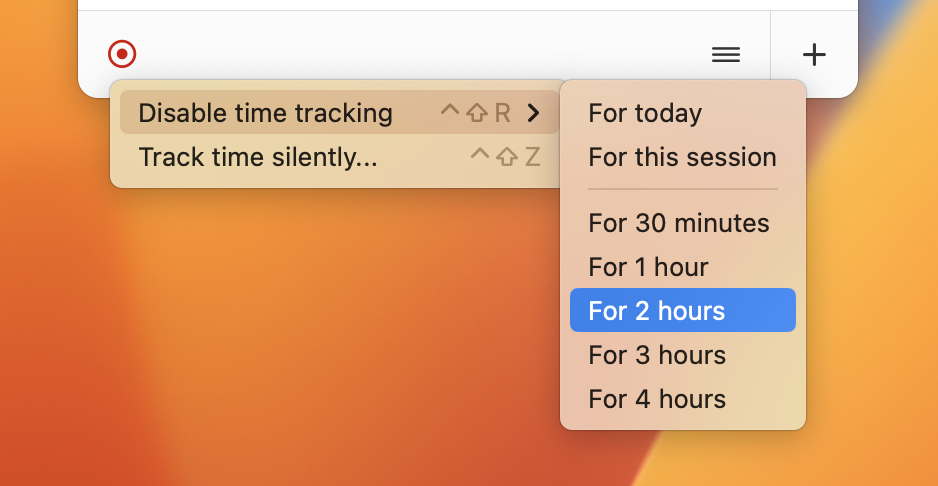Table of contents
Introduction
Daily includes multiple ways to control when to track time. This helps you preventing forgetting to record hours. It also allows you to make Daily (temporary) stop showing its periodic dialog when you don't want it to track your time.
Manually toggle time tracking
By default, Daily automatically starts tracking your time when it's being launched. You can disable this by unchecking Enable time tracking in Daily's preferences.
To disable time tracking, either click on the red record icon and select Disable time tracking, or use the system-wide keyboard shortcut Shift+Control+R. You can enable time tracking the same way again.
As of version 1.19, you can also temporarily disable time tracking. Click on the red record icon, hover your mouse over Disable time tracking, and select any of its shown durations. Time tracking will automatically resume once the duration has elapsed.

Instead of disabling time tracking, you can also make Daily automatically apply an activity. This prevents Daily's periodic dialog to be displayed. Instead, the provided activity is automatically applied for as long as you specified. Click on Time tracking is enabled and select Apply activity automatically... or use the system-wide keyboard shortcut Shift+Control+Z.
Schedule when to track time
Use Daily's scheduler to configure when it should track your time. Click on the menu icon, select Preferences... and click Scheduler to access it. You can always temporarily override the scheduler by manually toggling time tracking as described above.

When Overtime mode is enabled, Daily will continue to track your time until it becomes inactive (based on the Ask after inactivity setting in Daily's preferences). Hence, it will postpone deactivating time tracking. This is useful when working overtime, and you would like to track these hours too.
Automate using AppleScript
Finally, you can also use AppleScript to enable or disable time tracking or to automatically apply an activity. Refer to the examples below:
tell application "Daily"
set InOneHour to (current date) + (1 * hours)
get registration mode
set registration mode "off"
set registration mode "silent" with activity "Meeting"
set registration mode "silent" with activity "Customer presentation" that ends InOneHour
set registration mode "ask"
end tell